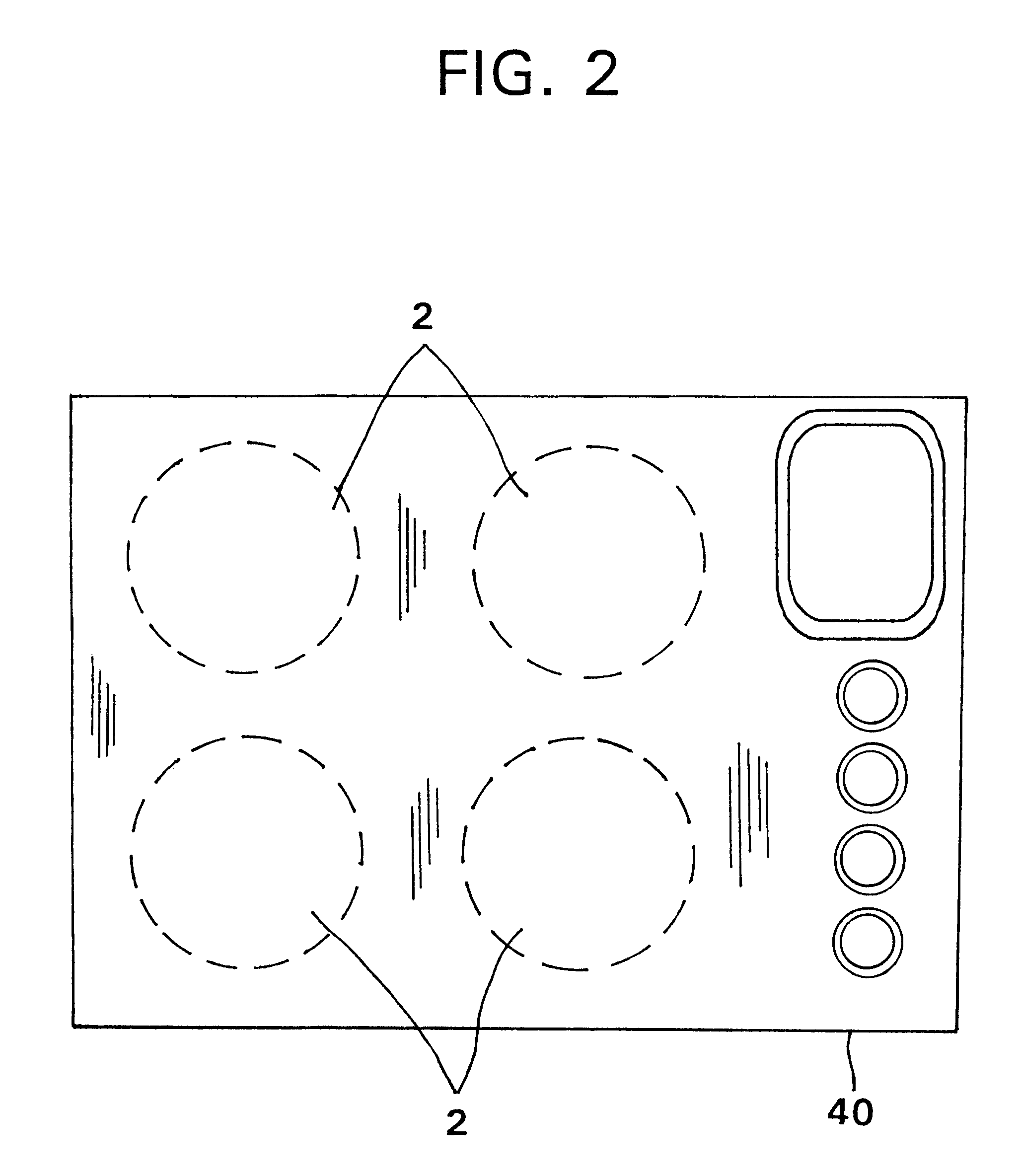Cooking stove having a smooth-top glass ceramic cooktop, and a smooth-top glass ceramic cooktop with a glass ceramic cooktop cooking surface, method for production of stoves with smooth-top glass ceramic cooktops and smooth-top glass ceramic cooktops
a technology of glass ceramic and cooktop, which is applied in the direction of heating arrangements, hot plates, heating elements, etc., can solve the problems of affecting the quality of the product, and affecting the cooking effect of the product,
- Summary
- Abstract
- Description
- Claims
- Application Information
AI Technical Summary
Benefits of technology
Problems solved by technology
Method used
Image
Examples
example 2
ped green glass objects having a thickness of four millimeters with the composition of Glass No. 1 were transformed using the following ceramization program. The four millimeters thick green glass plates were brought to eight hundred and five degrees Celsius at a heating rate of eleven degrees Kelvin per minute and held there for twenty-three minutes. Then the material was heated at nine and five tenths degrees Kelvin per minute to a maximum temperature of one thousand and sixty degrees Celsius and held there for twenty-three minutes. The material was cooled at twelve degrees Kelvin per minute to nine hundred and fifty degrees Celsius and was then further cooled to room temperature at the cooling rate of the furnace. With this transformation program, a translucent glass ceramic was obtained that has the characteristics listed in Table 2.
example 3
xample, plate-shaped green glass objects four millimeters thick having the composition of Glass No. 1 were used. The green glass plates were heated at eleven degrees Kelvin per minute to eight hundred and forty-five degrees Celsius. The material was held at this temperature for twenty-three minutes. Then the material was further heated at nine and five tenths degrees Kelvin per minute to a maximum temperature of one thousand and sixty degrees Celsius and held there for twenty-three minutes. It was then cooled at twelve degrees Kelvin per minute to eight hundred and thirty-five degrees Celsius and from there further cooled at the cooling rate of the furnace to room temperature. The characteristics of the transformed glass ceramic obtained are presented in Table 2 under Example 3.
examples 4 to 12
s, plate-shaped green glass objects four millimeters thick were all transformed following the same program. The composition of the examples is the same as the composition of Glass No. 1 in Table 1. The plate-shaped specimens were all heated at the same heating rate of seven and five tenths degrees Kelvin per minute to the maximum temperature and held there for the indicated times. During the heating at a constant heating rate, the crystallization of the high quartz mixed crystals occurred in the temperature range between seven hundred and sixty degrees Celsius and eight hundred and fifty degrees Celsius.
Table 3 shows the relationship between the manufacturing conditions when the maximum temperature and holding time are varied, the characteristics white value L*, color (specimen thickness four millimeters), light transmission tau (polished specimens, thickness as indicated in Table 3) and the occurrence of surface cracks. It is clear that as the maximum temperature and / or the hold ti...
PUM
| Property | Measurement | Unit |
|---|---|---|
| thickness | aaaaa | aaaaa |
| temperature | aaaaa | aaaaa |
| temperature | aaaaa | aaaaa |
Abstract
Description
Claims
Application Information
 Login to View More
Login to View More - R&D
- Intellectual Property
- Life Sciences
- Materials
- Tech Scout
- Unparalleled Data Quality
- Higher Quality Content
- 60% Fewer Hallucinations
Browse by: Latest US Patents, China's latest patents, Technical Efficacy Thesaurus, Application Domain, Technology Topic, Popular Technical Reports.
© 2025 PatSnap. All rights reserved.Legal|Privacy policy|Modern Slavery Act Transparency Statement|Sitemap|About US| Contact US: help@patsnap.com



